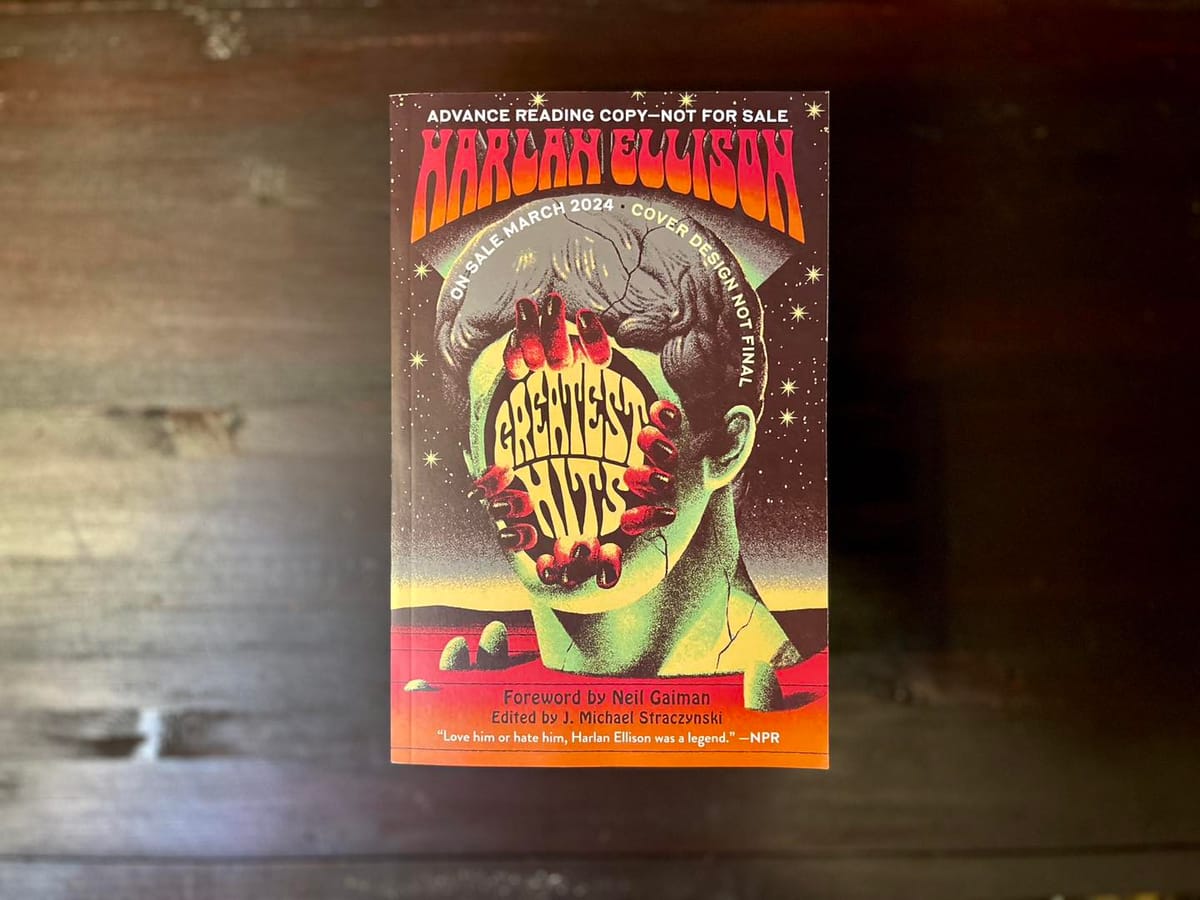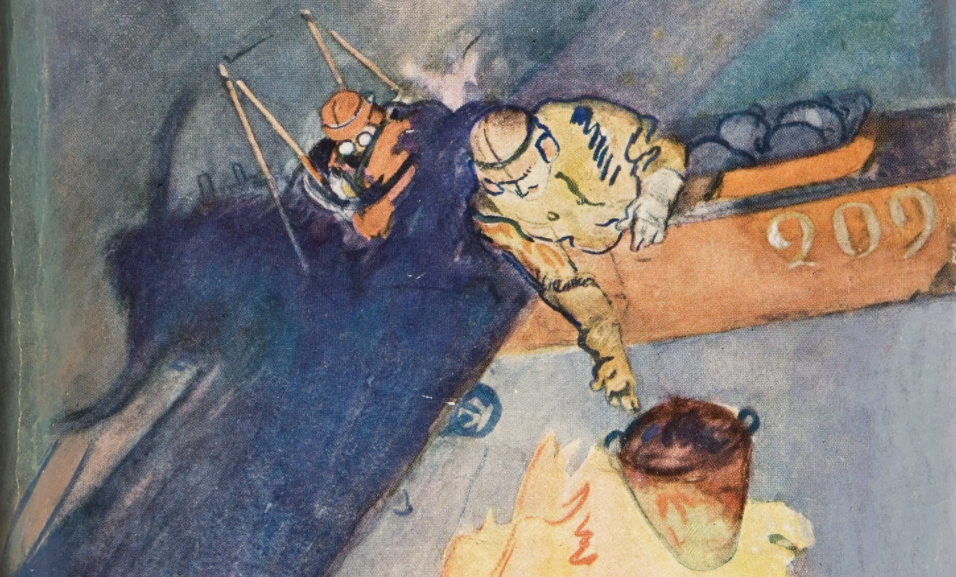Trapped in the machine
Black Mirror and Harlan Ellison's classic story "I Have No Mouth, and I Must Scream" are fascinating stories about how power corrupts

Black Mirror just returned to Netflix for its 7th season, and with it comes the first time the team behind it has continued the story of from another episode, "USS Callister." Rewatching the episode and this new one, "USS Callister: Into Infinity" prompted me to dig out the OG story of people trapped by a malevolent AI: Harlan Ellison's "I Have No Mouth, and I Must Scream."
Black Mirror is a magnificent science fiction series. Created by Charlie Brooker, it debuted on the UK's Channel 4 in 2011. It's an anthology series, where each episode stands on its own and explores our troubling relationships with technology. Some of the memorable episodes involve people being able to replay their memories, people stuck in dystopias, killer robots, people being resurrected with the help of artificial intelligence, dealing with the pitfalls of augmented reality, and so forth.
[Spoilers ahead for USS Callister and its sequel]
One of the best episodes is USS Callister, which opens with the crew of a cheery Star Trek-like scenario where a crew deals with a sworn enemy. It seems fairly straight forward until the crew celebrates with a bit of over-the-top hero worship for their captain, Robert Daly (played by Jesse Plemons). As it turns out, Daly's a tech genius who helped create a computer game called Infinity, a massive, immersive online space opera game, and he's considered the office weirdo: he's obsessed with a classic space opera show called Space Fleet (Black Mirror's version of Star Trek), while he's responsible for the company, he doesn't get a lot of respect from the folks who work for him.
The horrifying twist soon arrives when a new employee Nanette Cole (Cristin Milioti) is warned about him and his eccentricities. Slighted, he collects her DNA and brings it home, where he's able to create a digital copy of her in a home-grown test build of the Infinity universe. The digital Nanette quickly finds that her fellow crew are fellow cloned versions of all the people who've slighted Robert, and he's brought them there to play out his fantasies of being respected while playing mission after mission in Space Fleet.
Nanette eventually engineers an escape of sorts by blackmailing her real-world counterpart, leaving Daly in a coma with her and her fellow crew members escaping his private universe into the larger online game, killing him in the process.
In this newly-released sequel, Nanette and her digital crew are now free to move around the larger Infinity universe, but they've found that they're at the mercy of the culture of gamers and game developers. They're strapped for cash and can't jump or get supplies, and as they hunt down and rob players for their in-game currency, they're finding just how sociopathic and horrifying people can be – while soon realizing that their only way to really escape and survive might be to journey to the heart of Infinity, only to find some troubling secrets about the nature of the game and how it came about.
USS Callister is a phenomenal episode, and while Into Infinity isn't quite as good, they're both playing with some really interesting themes that science fiction and cyberpunk authors have played with for decades, including Harlan Ellison, whose story "I Have No Mouth, and I Must Scream" is one of the genre's best – and most horrifying – stories.
Published in the March 1967 issue of IF: Worlds of Science Fiction, Ellison introduces readers to a small group of tortured characters: Benny, Ellen, Gorrister, Nimdok, and Ted, who've been kept alive by a malevolent artificial intelligence after the conclusion of World War III. The rest of humanity has been destroyed, and the machine – AM – has kept these five around to toy with them, horrifically transforming them when they step out of line, sending them on torturous quests across hellish landscapes, and providing them with the barest minimum of resources to keep them going.
Ellison really hammers home the surreal and horrific existence these characters endure through his setting and his language, and uses it as a parable for how badly technology can go off the rails. The inspiration isn't hard to parse. It was written at the height of the Cold War, where the US and USSR aimed plenty of nuclear weapons at one another and set up systems that would allow for an automated apocalypse if the right conditions arose. Those anxieties over nuclear apocalypse sparked plenty of stories, from Walter M. Miller Jr.'s A Canticle for Leibowitz
to James Cameron's Terminator and Ellison's masterpiece.

But what struck me about this story isn't the possibility of runaway nuclear war, but a striking version of a malevolent machine intelligence that reflects humanity's twisted ego and its capacity for cruelty. After all, if we make machines in our image, wouldn't some of those same traits and tendencies carry over, despite our best intentions? Brooker pulls these anxieties neatly into USS Callister and its sequel.
If there's a throughline that runs through Black Mirror's episodes, it's an examination of what we'll do with power when it's placed in our hands without many limits. Sometimes, that comes with horrifying social implications, like when two child murders have their minds wiped and are endlessly chased through a village over and over again, or when a military uses tech to force its soldiers to see their enemies as mutants, perpetuating a genocide. Here, the stakes are a little more personal: Robert gets to play god in this little pocket universe, torturing the people who slighted him in the real world.
It's a horrific idea that runs hand in hand with Ellison's story, someone being given the absolute control to manipulate reality for their own pleasure, while the people trapped inside are forced to contend with it. Robert erases Nanette's face when she rejects his advances, transforms a couple of crew members into horrific aliens, jettisons someone's child out of an airlock (and keeps their DNA on file as leverage to ensure his cooperation) and endlessly toys with them for his own amusement. He's a sadistic child playing with toys.
In the sequel, we learn that the reason Infinity is such a good game is that Robert himself was cloned and stuck in the game, and when the digital version of Nanette makes the trek to the center of Infinity to him, she finds that this earlier version of him can easily be tipped over into the same sadistic tendencies: "I'm a good guy" he says as he tries to clone her to be a companion against her will.
Ellison's AM does something similar. It had evolved out of various weapons systems during the Cold War and wound up hating its makers, taking that hatred out on its subjects in horrifying ways: it transformed Benny into an ape-like creature and blinded him, while Ellen is sexually assaulted by the group over and over again, Ted is transformed into a horrific slug-like creature, and the others are tortured in their own ways, unable to die from the elements.
Each of these stories shows how people – human, digital, or mechanical will do if given a free hand: horrific things. They might be able to rationalize it, as Robert does – he's lonely and needs someone to talk to – before eventually realizing that they don't need to justify their actions. They will just do whatever they want with nobody can stop them. It's a fitting bit of commentary in 2025.
These are the types of pieces that I like digging into for readers: things that examine the intersection of science fiction and the real world, and what it all means. If you found this piece informative, please consider signing up as a supporting subscriber: it helps keep the newsletter running.
